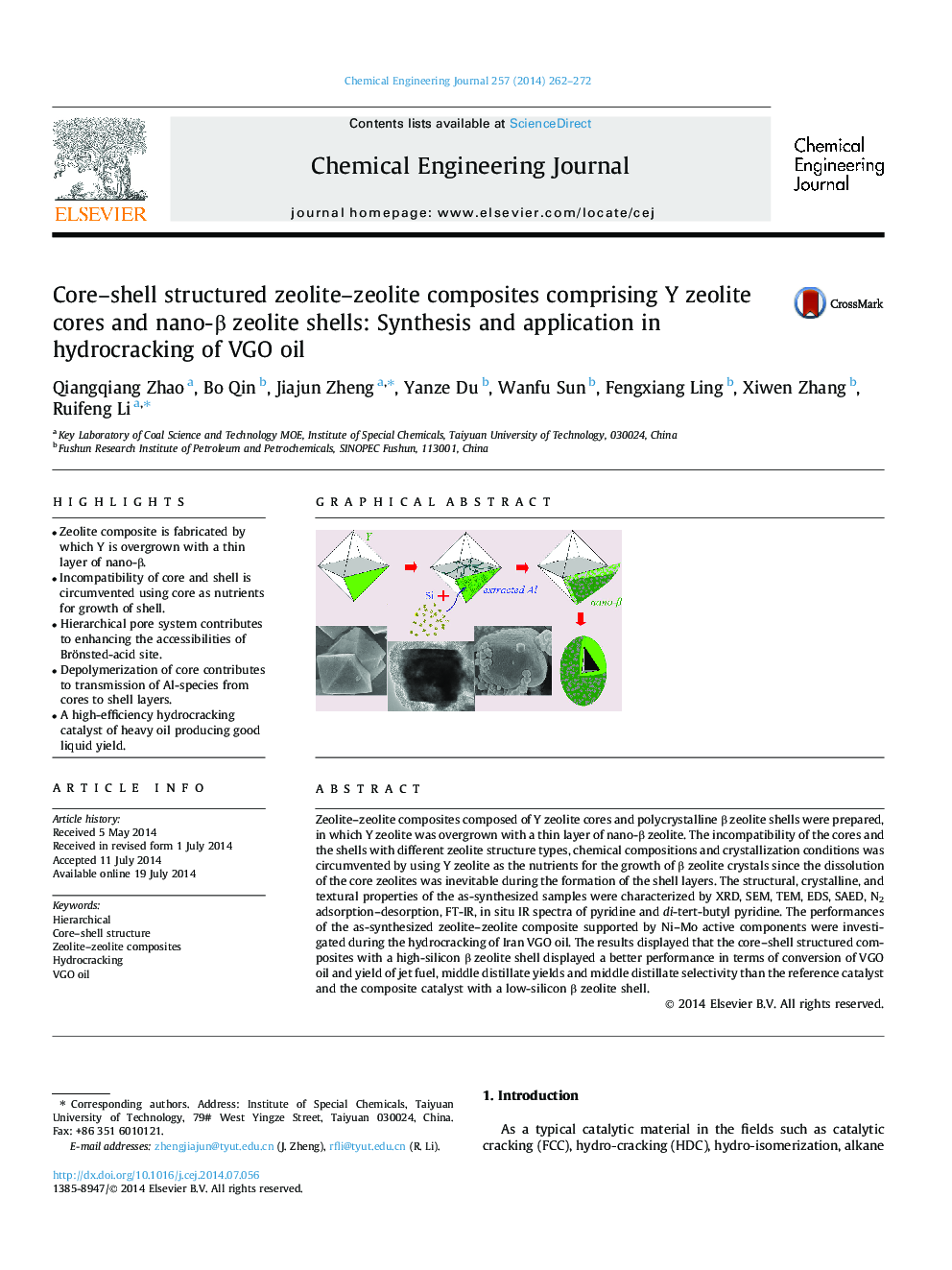| Article ID | Journal | Published Year | Pages | File Type |
|---|---|---|---|---|
| 147341 | Chemical Engineering Journal | 2014 | 11 Pages |
•Zeolite composite is fabricated by which Y is overgrown with a thin layer of nano-β.•Incompatibility of core and shell is circumvented using core as nutrients for growth of shell.•Hierarchical pore system contributes to enhancing the accessibilities of Brönsted-acid site.•Depolymerization of core contributes to transmission of Al-species from cores to shell layers.•A high-efficiency hydrocracking catalyst of heavy oil producing good liquid yield.
Zeolite–zeolite composites composed of Y zeolite cores and polycrystalline β zeolite shells were prepared, in which Y zeolite was overgrown with a thin layer of nano-β zeolite. The incompatibility of the cores and the shells with different zeolite structure types, chemical compositions and crystallization conditions was circumvented by using Y zeolite as the nutrients for the growth of β zeolite crystals since the dissolution of the core zeolites was inevitable during the formation of the shell layers. The structural, crystalline, and textural properties of the as-synthesized samples were characterized by XRD, SEM, TEM, EDS, SAED, N2 adsorption–desorption, FT-IR, in situ IR spectra of pyridine and di-tert-butyl pyridine. The performances of the as-synthesized zeolite–zeolite composite supported by Ni–Mo active components were investigated during the hydrocracking of Iran VGO oil. The results displayed that the core–shell structured composites with a high-silicon β zeolite shell displayed a better performance in terms of conversion of VGO oil and yield of jet fuel, middle distillate yields and middle distillate selectivity than the reference catalyst and the composite catalyst with a low-silicon β zeolite shell.
Graphical abstractHierarchical core–shell zeolite–zeolite composite was fabricated by Y overgrown with a thin layer of nano-β: The extracted aluminum species by depolymerizing NaY zeolite crystals react with the silicon species near the interface of the NaY zeolite core and the precursor yielding the β zeolite layers, which induces and promotes the growth of β zeolite crystals over the core zeolite. Steric hindrance provoked by the concurrently growing crystals in the shell gives the β zeolite phase in the composite a relatively smaller size; A hierarchical pore system resulted from alkaline etching of the core Y and intercrystalline void of nano-β in the shells is introduced into the as-synthesized zeolite–zeolite composites.Figure optionsDownload full-size imageDownload as PowerPoint slide
